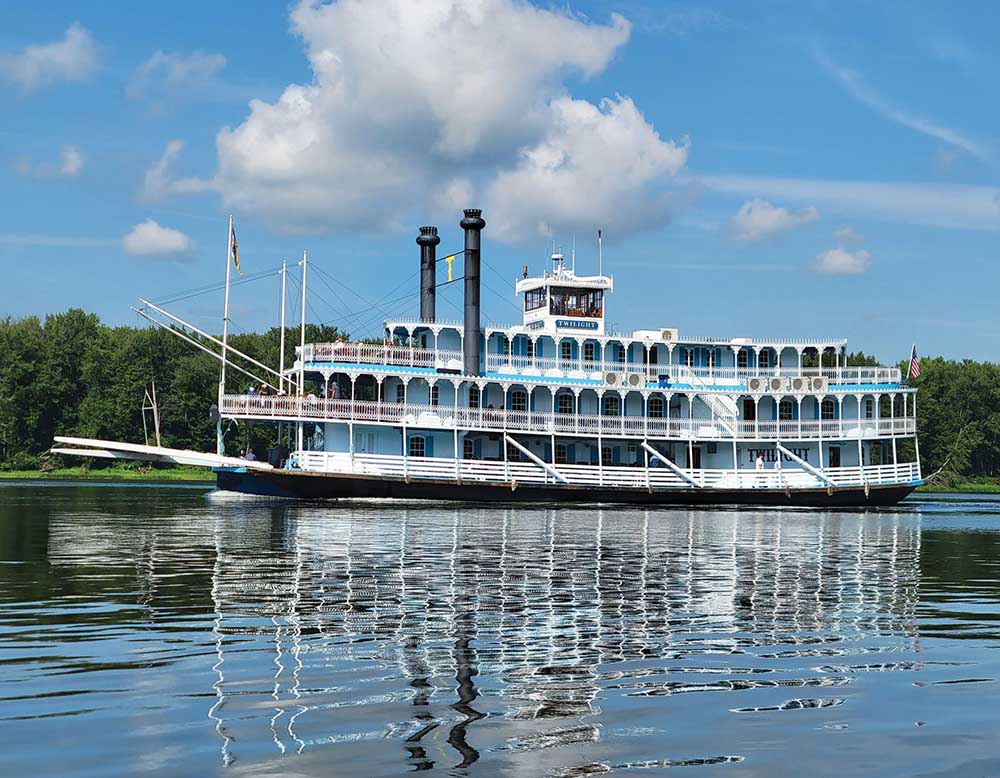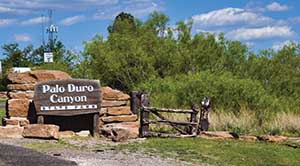a Quintessential American Experience
Cruising the Upper Mississippi River is more than a vacation; it’s an immersion into the heart of American exploration. Back when rivers were the highways, the story of this nation was quickly unfolding. As the country moved west, great communities expanded up and down the Mississippi River.
The advent of steam-powered riverboats accelerated this growth as people, goods, and services moved at will. Riverboats were the great workhorses of commerce and provided modern, elegant passenger transportation. Mark Twain noted in Life on the Mississippi – “The steamboats were finer than anything on shore. Compared with superior dwelling houses and first-class hotels, they were indubitably magnificent, they were ‘palaces.’”
More than just transportation, steamboats represented the expansionist American spirit. Paddle-wheeler travelers could find gambling, fine dining, and a variety of entertainment. By the middle of the nineteenth century, the grand ballrooms and casinos of riverboats became settings that American writers used to depict adventure stories of daring gamblers and hard-luck heroes.
Their heyday is long gone, but there are still opportunities to step back and experience the pace of travel from those Victorian times. The Riverboat Twilight in LeClaire, Iowa is one such opportunity, proudly carrying on the tradition of relaxing, luxurious river travel. It has been acknowledged as the most elegant riverboat launched in the past 100 years.
It All Began in Peoria
The Twilight’s story begins in Peoria, Illinois in 1973 with Captain Dennis Trone. He brought his newly completed riverboat, the Julia Belle Swain, to the city and began operating overnight river cruises on the Illinois river up to Starved Rock State Park. The Julia Belle Swain (JBS), was designed to capture the essence of the classic paddle wheel steamboats of the 19th century. The JBS is prominently featured in various cinematic adaptations of Mark Twain’s literary works – first in the 1973 movie Tom Sawyer (as the River Queen), the 1974 movie Huckleberry Finn, and also in the opening and closing titles of the 1979 television series Huckleberry Finn and His Friends. In 1987, Captain Trone moved operations to the Mississippi River at LeClaire, Iowa where it was joined by the newly completed, Riverboat Twilight.
The Riverboat Twilight
After decades of building and operating riverboats, Captain Trone began work on a new design. The result was the Riverboat Twilight, a more luxurious, climate-controlled vessel with modern propulsion and improved passenger amenities.
The Twilight is a replica of the lavish Victorian steamboats of over a century ago. Her unique, rounded stern and ornate, architectural detailing are reminders of those classic Mark Twain riverboats. Built at LEEVAC shipyard in Jennings, Louisiana, the Twilight was completed in April 1987. The main deck has a length of 126 feet and breadth of 30 feet.
The Twilight is exceptionally fast for a vessel of her type and handles quite well. Using the 65-horse power bow thruster and the twin screw configuration, this vessel can easily pivot 360 degrees in its own length. She has even been known to pull the occasional water skier.
In 1987, the completed Twilight joined the JBS and began Mississippi River cruises with a 2-day overnight cruise; a 1-day cruise and a sightseeing cruise. The result was an immediate success with passengers; quaint enough to get to know your neighbor, yet big enough to enjoy privacy with your travel companion(s). The three decks provide ample indoor and outdoor seating as well as wrap-around windows. Fresh meals are prepared in the galley onboard, and the full-service bar and gift shop provide just the right indulgences.
Two Days on the River
The Twilight’s signature two-day cruise departs from the historic river town of LeClaire, Iowa to the overnight destination of Iowa’s oldest city, Dubuque. During the two-day cruise, passengers are encouraged to step back from their daily routine and immerse themselves in the pace and elegance of days gone by. The top deck is the perfect place to relax, perhaps with a book in hand, as the world drifts slowly by.
The Twilight offers unmatched access and views of the river. Captain Kevin Stier provides historical, cultural, and ecological narration to showcase the various sites. The route weaves through two locks and dams, towering bluffs, and charming river towns.
The Upper Mississippi River is home to the 240,000-acre National Wildlife and Fish Refuge. During each cruise, travelers encounter bald eagles, great blue herons, pelicans, and gulls, as well as land-fairing animals like beavers, otters, and even a swimming deer on occasion. Stretches of the river remain untamed and offer a portal into how it appeared centuries ago.
Onboard, passengers enjoy live entertainment, games, snacks, lunch, and dinner before arriving at riverfront accommodations in historic Dubuque, Iowa.
Dubuque, founded in 1833, is named after Julien Dubuque, a French-Canadian fur trader who arrived in the late 18th century. In 1788, Dubuque established a settlement after obtaining permission from the Meskwaki Native Americans to mine lead in the area, making it one of the earliest European settlements in the region.
The U.S. government officially opened the area to European-American settlers following the Black Hawk War, and Dubuque quickly grew as a center of trade and industry. Its location on the Mississippi River made it a key hub for riverboat traffic, contributing to its early economic development. By the mid-19th century, Dubuque had become a significant center for manufacturing, particularly in industries like milling, meatpacking, and brewing.
The arrival of the railroad in the 1850s further boosted Dubuque’s growth, connecting it to larger markets and encouraging the influx of immigrants, particularly from Germany, Ireland, and later, Luxembourg. The city’s rich architectural heritage, much of which remains today, reflects this period of prosperity.
Throughout the 20th century, Dubuque faced economic challenges, particularly with the decline of manufacturing. However, in recent decades, the city has revitalized its economy through diversification, focusing on healthcare, education, and tourism. Today, Dubuque is known for its vibrant cultural scene, historic architecture, and picturesque riverfront.
Twilight passenger’s riverfront accommodations provide a prime location to discover this city. Day two of the cruise begins with breakfast and includes admission to Iowa’s #1 attraction, the must-see National Mississippi River Museum & Aquarium. Then it’s time to re-board for the return journey and take in all the sites missed on the trip upriver. Lunch and dinner are served at your table before arriving back to LeClaire.
An Invitation to Unwind and Explore
In 2027, the Riverboat Twilight will celebrate her 40th year of connecting passengers with this storied waterway. It’s a journey that connects with the soul of the river, the warmth of its communities, and the rhythm of its life. It’s an experience that stays with you, long after you’ve returned to the hustle and bustle of everyday life. If you’re seeking an adventure that combines natural beauty, rich history, and a touch of luxury, there may be none better than a cruise through the heartland of America aboard the Riverboat Twilight.
For more information about Riverboat Twilight Mississippi River Cruises,
Call (800) 331-1467, or visit their website at RiverboatTwilight.com.










